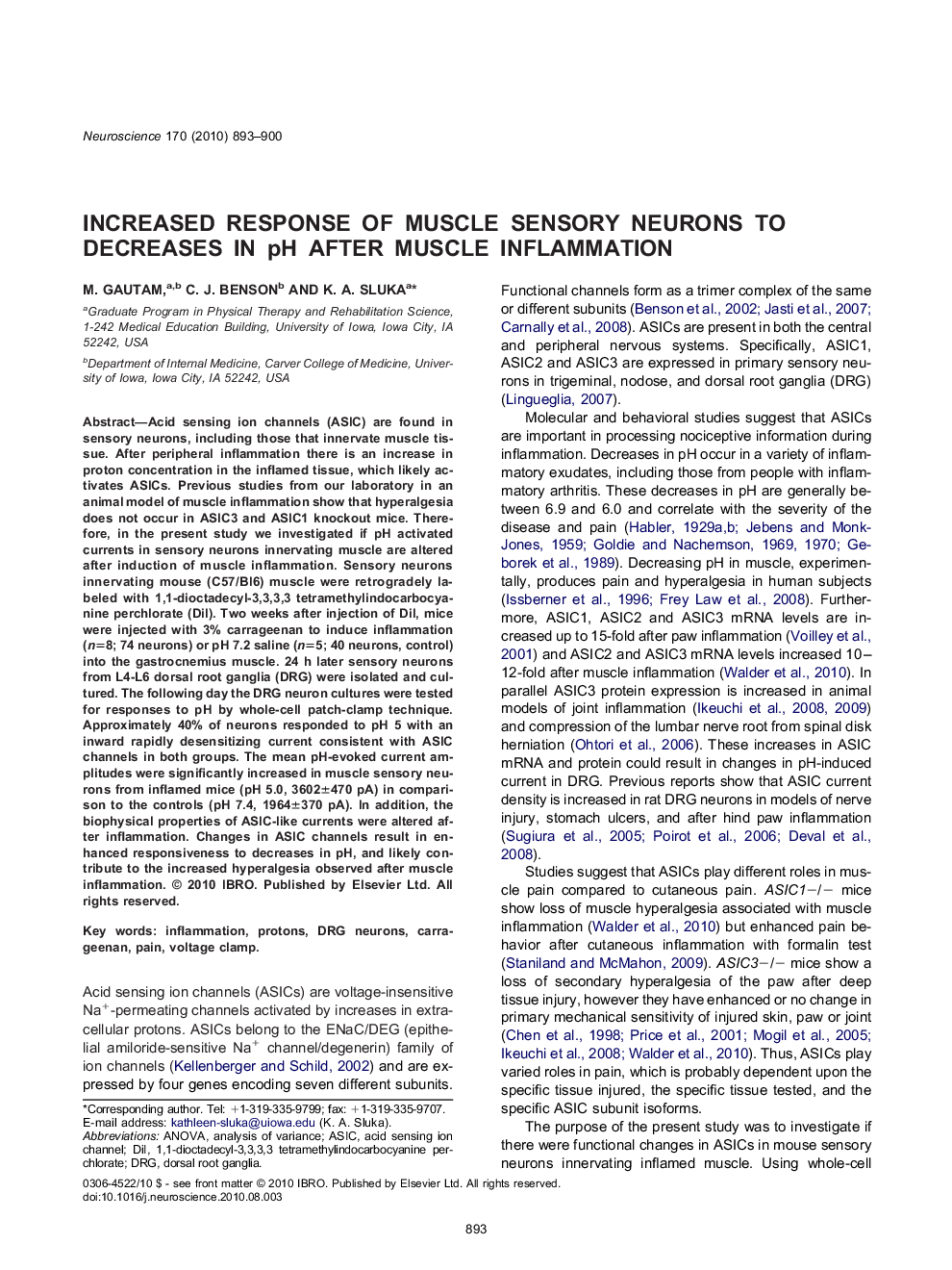| Article ID | Journal | Published Year | Pages | File Type |
|---|---|---|---|---|
| 6276831 | Neuroscience | 2010 | 8 Pages |
Abstract
Acid sensing ion channels (ASIC) are found in sensory neurons, including those that innervate muscle tissue. After peripheral inflammation there is an increase in proton concentration in the inflamed tissue, which likely activates ASICs. Previous studies from our laboratory in an animal model of muscle inflammation show that hyperalgesia does not occur in ASIC3 and ASIC1 knockout mice. Therefore, in the present study we investigated if pH activated currents in sensory neurons innervating muscle are altered after induction of muscle inflammation. Sensory neurons innervating mouse (C57/Bl6) muscle were retrogradely labeled with 1,1-dioctadecyl-3,3,3,3 tetramethylindocarbocyanine perchlorate (DiI). Two weeks after injection of DiI, mice were injected with 3% carrageenan to induce inflammation (n=8; 74 neurons) or pH 7.2 saline (n=5; 40 neurons, control) into the gastrocnemius muscle. 24 h later sensory neurons from L4-L6 dorsal root ganglia (DRG) were isolated and cultured. The following day the DRG neuron cultures were tested for responses to pH by whole-cell patch-clamp technique. Approximately 40% of neurons responded to pH 5 with an inward rapidly desensitizing current consistent with ASIC channels in both groups. The mean pH-evoked current amplitudes were significantly increased in muscle sensory neurons from inflamed mice (pH 5.0, 3602±470 pA) in comparison to the controls (pH 7.4, 1964±370 pA). In addition, the biophysical properties of ASIC-like currents were altered after inflammation. Changes in ASIC channels result in enhanced responsiveness to decreases in pH, and likely contribute to the increased hyperalgesia observed after muscle inflammation.
Keywords
Related Topics
Life Sciences
Neuroscience
Neuroscience (General)
Authors
M. Gautam, C.J. Benson, K.A. Sluka,
